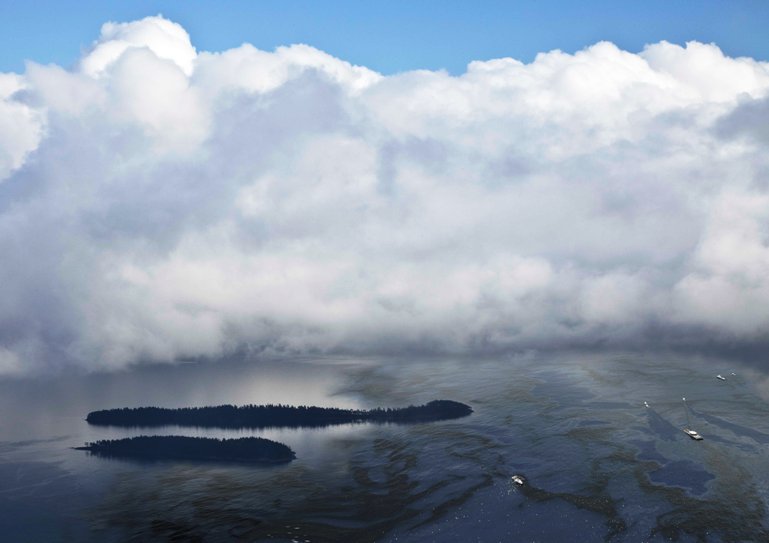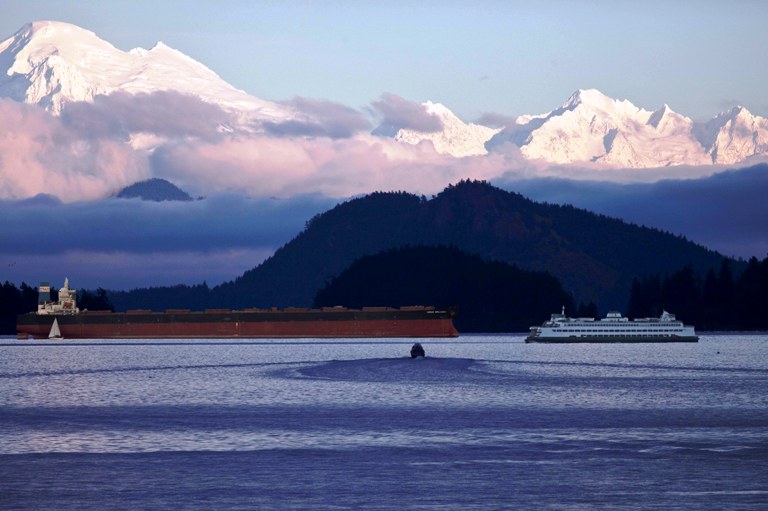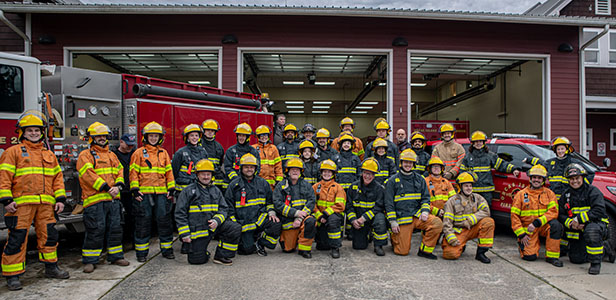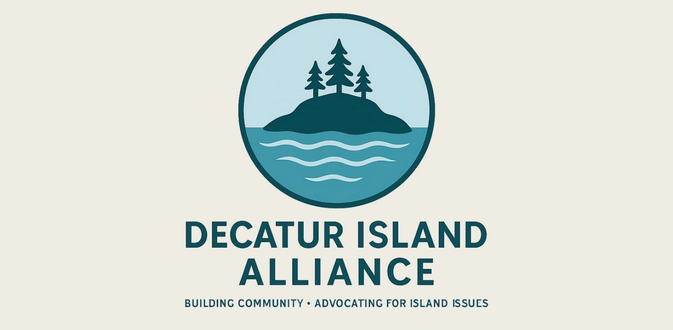By Margie Doyle
Robert Dash, Orcas island photographer and teacher, has been involved in OrcasNOCOALition efforts to encourage scoping comments regarding the Gateway Pacific/Cherry Point Coal Terminal.
In addition to submitting his own comments to the scoping summary for the Environmental Impact Statement, he has consulted with his photographic “muse” to produce a series of photographic images picturing the San Juan Islands and the Salish Sea after a cargo transport spill of oil or other materials.
Dash has spent the past month or so, working with photographs to create a gallery of his images, some of which include composites from pertinent public domain images. His gallery can be found at: https://www.robertdashphotography.com/Other/Coal/.
“I’d like to remind people about the crucial January 21st deadline to submit scoping comments,” said Dash.
“There’s so much data and documentation, how do you illustrate that? I felt there needed to be an artistic response, a way for people to see what we’re talking about; that it could make a contribution.”
“There are so many voices that need to be heard about the impacts of [the coal shipping terminal]. I’ve been part of the scoping meetings, and it’s a little overwhelming, but the process of composing these photographs has been inspiring to me. ”
Dash himself has experienced one oil spill first hand in 2004 when a 400-acre marine estuary on Suquamish tribal land on the Kitsap Peninsula was badly fouled by oil drifting across Puget Sound after a 4,800-gallon marine-fuel spill near Richmond Beach.
As reported by Lynn Thompson for the Seattle Times in 2004, “Oil-blackened Dungeness crab lay heaped on a beach used by the tribe for sacred gatherings and family picnics. Frantic efforts to hold a protective boom in place around the mouth of a freshwater lagoon failed when high tides, whipped by rising southerly winds, washed the heavy fuel oil over the boom.
“The oil spilled into Puget Sound after a refueling barge was overfilled early Tuesday at a ChevronTexaco fuel-transfer terminal at Point Wells.” (To read the full article, go to seattletimes.nwsource.com/archive/2004oilspill)
“It was a massive clean-up effort, and the pollution came for weeks and weeks and we carted away bags and bags of it,” said Dash.

Robert Dash’s favorite in his “Coal” collection, the view from Mt. Constitution looking out to Clark and Barnes Islands.
“We can mitigate on land, but it is very difficult to mitigate marine issues. What are we buying into? In [marine operations such as shipping] there is no room for human error — but human error exists. There are so many aspects that are problematic; and there is no possibility that there won’t be some problem.”
Dash points out that the number of scoping comments, as well as their content, is important to those who decide the future of the terminal project. He urges people to “use your voice” to register concerns.
“It doesn’t take that long and it’s our best chance to get involved. We’re talking about quantity as well as quality, and it can be as simple as saying ‘please study my concerns.'” He notes that while there are many comments from Bellingham, and some from Lopez and San Juan Islands, that comments from Orcas Island and Eastsound in particular, are needed.
Dash encourages people to go to the OrcasNOCOALition.net site and reminds them that Monday, Jan. 21, 2013 is the deadline for submitting comments. “Serious attention needs to be paid to how ugly this can be. I don’t see any benefit for the San Juan Islands or the Salish Sea.”
Donna Riordan, co-founder of OrcasNOCOALition, says, “There are a couple of ways to prepare scoping comments: 1) write your own comment based on your concerns about significant adverse impacts; 2) review and support the comments of others. Both approaches are important. Whichever approach you decide to use, you can send comments by mail or access the comment website as noted here: https://www.eisgatewaypacificwa.gov/get-involved/comment
**If you are reading theOrcasonian for free, thank your fellow islanders. If you would like to support theOrcasonian CLICK HERE to set your modestly-priced, voluntary subscription. Otherwise, no worries; we’re happy to share with you.**









In relation to the Coal Port Protest, if a site is or becomes available for posting photos by island residents, I’d appreciate knowing. Perhaps additional photos made public could add volume to Robert Dash’s “voice” in protest of the Coal Terminal, portraying what we Islanders don’t want to lose.
It is a great gift to see what the Salish Sea will look like if all of these barges are allowed in the waters to transport the coal. Thank you!